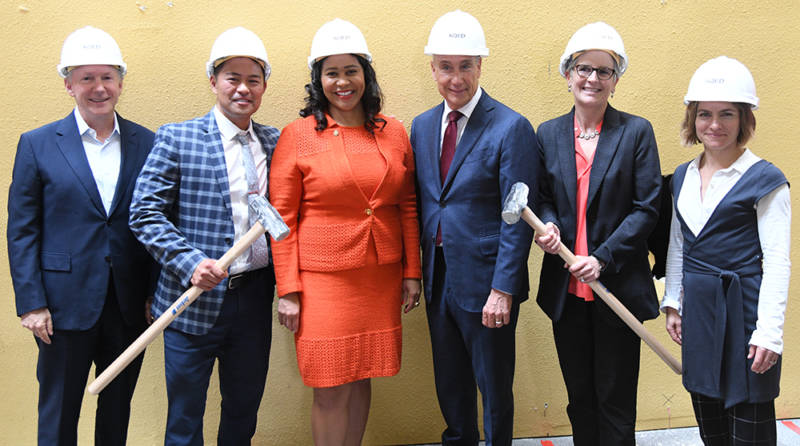Two-year project will transform KQED’s headquarters into a hub for civic engagement and journalism in the 21st century
KQED, the public media station serving Northern California, held a groundbreaking ceremony at its San Francisco headquarters located at 2601 Mariposa Street today. The major renovation project, led by the award-winning design firm EHDD Architects, will transform KQED’s headquarters to accommodate the station’s significant staff growth over the past decade and the expansive nature of the services it provides audiences today. It will also create brand new onsite spaces for in-person events, programs and convening.
To signal the start of construction of the two-year project, KQED President Michael Isip was joined by San Francisco Mayor London Breed, Senator Scott Wiener, KQED President Emeritus John Boland, KQED Board Chair Hank Barry, Campaign 21 Chair Anne Avis, and EHDD Principal Rebecca Sharkey to provide comments about the project and how the new design reflects an ambitious vision for the future of the station and its increasing civic and journalistic role in the Bay Area community.
“We are doing more than creating a better and beautiful building,” said Isip. “What we are creating is a place of trust so that we can be more open and accessible to our community. A place of trust that drives innovation with more modern production spaces, studios and distribution capabilities to keep pace with technology and our audiences’ needs. A place of trust that enables collaboration so that the best public media talent can not only create, but can thrive. And a place of trust that is for community, so that our community can come in and connect with our journalists, stories, talent from PBS and NPR, civic leaders and thought leaders. More importantly, so that they can connect with each other to foster civic and civil dialogue to find common ground.”

The project reinvents a 156,000-square-foot building that KQED purchased in 1992. The building reflected the industrial nature of broadcasting and the neighborhood at the time. But over the past 25 years, KQED has grown from 200 to nearly 500 employees, while the types of services the station provides today spans not only radio and television broadcast, but also digital programming; original storytelling encompassing science, education, arts and culture; and a vastly expanded local and statewide reporting service. The outer Mission District neighborhood surrounding KQED has also changed. Warehouses and factories have been replaced by residential housing complexes, restaurants, cafes and art spaces.
